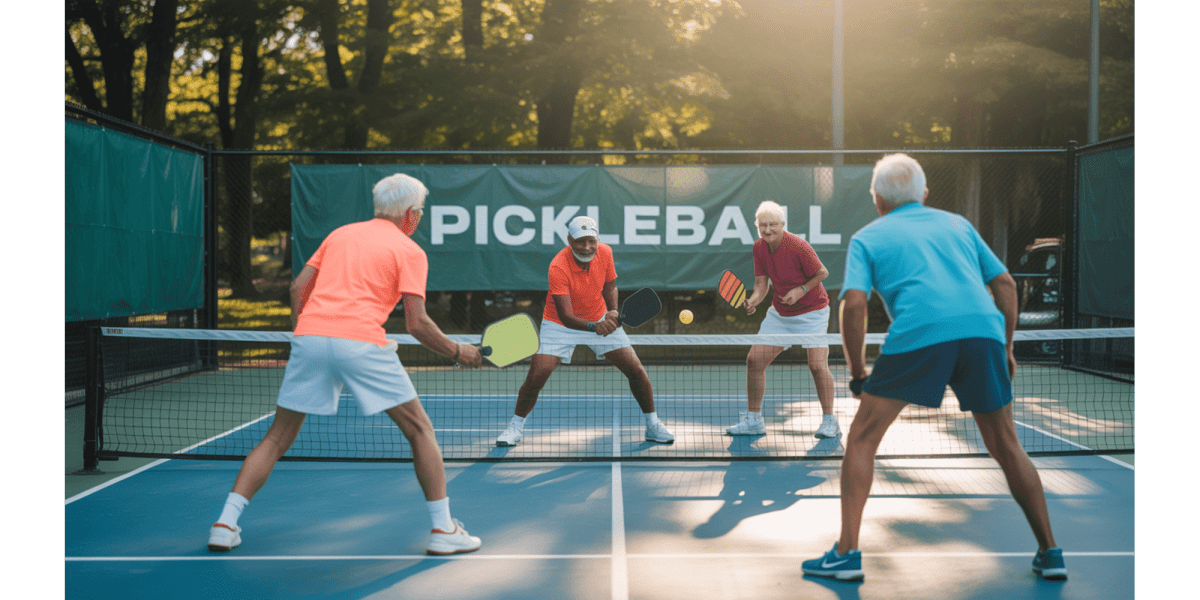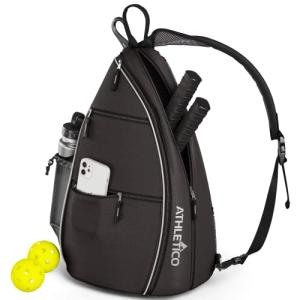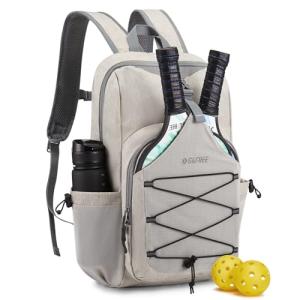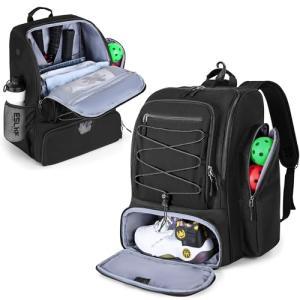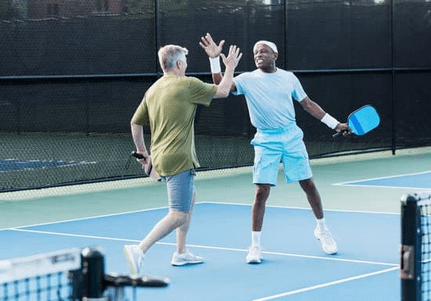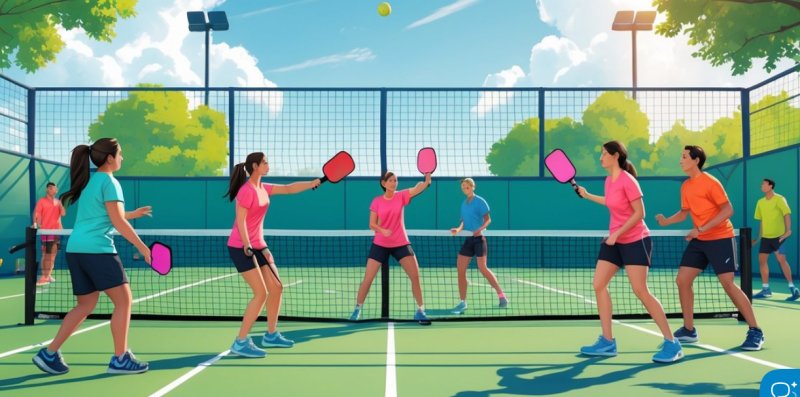Learning the pickleball serve rules is key for all players. A good serve can change the game. Knowing the rules is vital for winning.
The USA Pickleball official rules say the server's arm must swing up when hitting the ball. The paddle must hit the ball below the waist. This guide will teach you the serving rules in pickleball. It will help you understand the rules and boost your game.
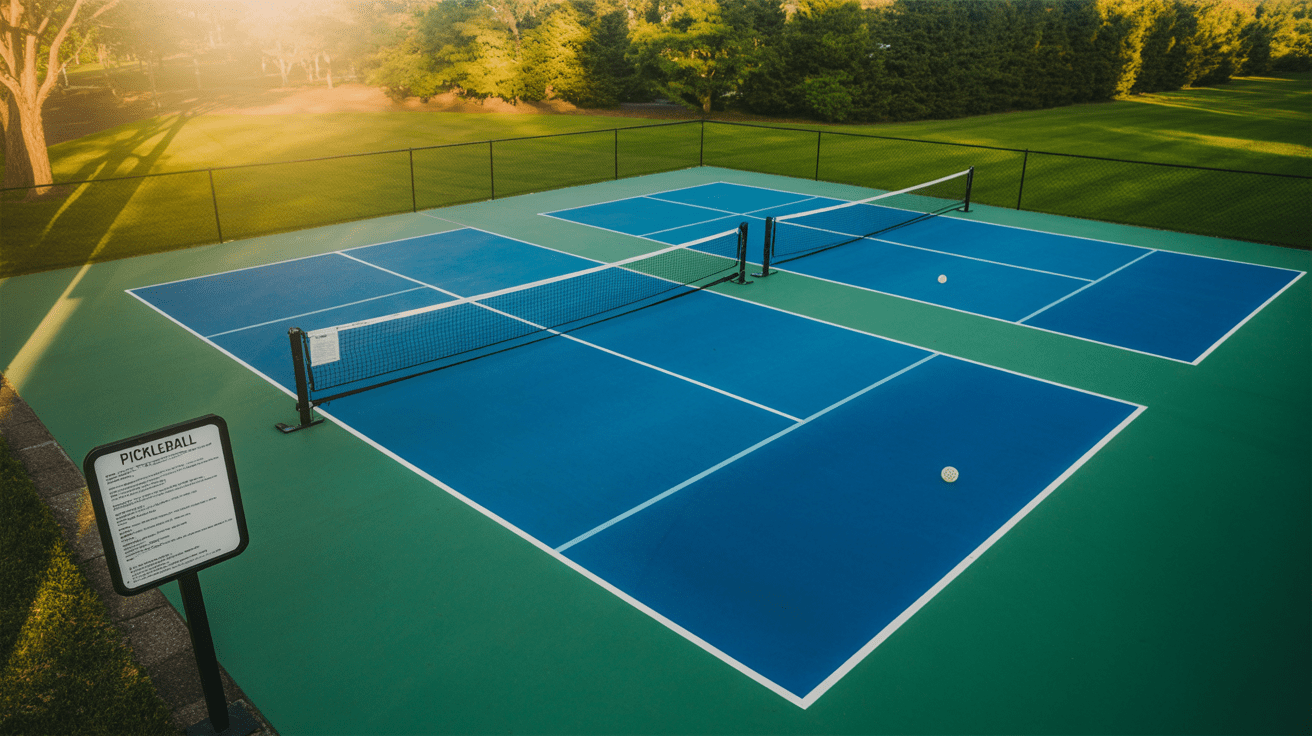
USA Pickleball official rules
Key Takeaways
- Understand the basic rules and regulations of serving in pickleball.
- Learn the proper technique for executing a valid serve.
- Discover common mistakes to avoid when serving.
- Improve your overall game with a strong and consistent serve.
- Stay up-to-date with the latest guidelines from USA Pickleball.
The Fundamentals of Pickleball Serve Rules
Knowing the basics of pickleball serving rules is key to playing better. The serve starts the game and follows strict rules.
The Serving Area and Positioning
The serving area in pickleball is marked by the baseline and lines extending from it. Players must stand behind the baseline and within the center and sideline limits. Good positioning is vital for a valid serve.
The server must have at least one foot behind the baseline. They cannot step on the baseline or court until the ball is hit. This rule maintains game fairness and prevents servers from gaining an unfair advantage.
Scoring System and Service Rotation
The scoring system in pickleball requires calling out the score before each serve. The score includes the serving team's score, the opponent's score, and the server number. This helps track the game's progress and tells players whose turn it is to serve.
| Score Component | Description |
|---|---|
| Serving Team's Score | The current score of the team that is serving. |
| Opponent's Score | The current score of the opposing team. |
| Server Number | Indicates which server is serving (1 or 2). |
Starting the Game with the Right Serve
To start the game right, players must follow the pickleball serve guidelines. They must serve underhanded, with the paddle below the waist, and hit the ball below the navel. The server must also clear the non-volley zone.
By learning the serving rules, players can start the game strong and get an edge. Knowing the serving regulations for pickleball is crucial for fair play and fun games.
Proper Pickleball Serving Technique
Proper pickleball serving technique involves a combination of stance, motion, and follow-through. These elements are key for a great serve. Learning them well can boost your game.
The Underhand Serve Requirement
In pickleball, the serve must be underhand. The paddle should hit the ball below the server's waist. This rule makes pickleball different from other racket sports.
Key aspects of the underhanded serve include:
- The paddle contact must be below the waist.
- The serve must be made with an underhand motion.
Proper Stance and Foot Positioning
Your stance and foot position are vital for a good serve. Stand behind the baseline with your feet shoulder-width apart. This stance helps you stay stable and powerful.
Tips for proper stance and foot positioning:
- Stand behind the baseline with your feet shoulder-width apart.
- Ensure at least one foot is in contact with the ground.
Service Motion and Follow-Through
The service motion in pickleball is an upward arc. Follow-through is key to control and accuracy. A smooth motion leads to a reliable serve.
Elements of an effective service motion:
- Use an upward arc motion to serve the ball.
- Follow through with your paddle to maintain control.
Common Serving Violations and Faults
Serving is key in pickleball. Knowing the common faults can greatly improve a player's game. It's important to follow the rules to avoid faults that can help the opponent.
Foot Faults Explained
Foot faults happen when the server's feet touch the baseline before hitting the ball. This mistake can be fixed by paying attention to foot placement. Servers should stay behind the baseline and not step on it until the ball is hit.
Illegal Service Motions
Illegal motions include serves made above the waist or with the paddle in the wrong position. The serve must be underhand, with the paddle below the waist. Practicing the right technique is crucial to avoid these faults.
Let Serves in Pickleball
Let serves, which hit the net but still land in the opponent's court, are now valid. This rule change means let serves are not replayed anymore. Knowing this can prevent disputes during games.
Recognizing and avoiding common faults can significantly enhance a player's game. By understanding foot faults, illegal motions, and let serve rules, players can improve their strategy and technique. This leads to better overall performance.
The Double Bounce Rule in Pickleball

In pickleball, the double-bounce rule is key to the game's flow and strategy. It makes sure the game is fair and fun for everyone.
How the Double Bounce Rule Works
The rule says the receiving team must let the ball bounce before hitting it back. Then, the serving team must also let the ball bounce before hitting it back. This rule helps extend rallies and stops powerful serves from dominating the game.
This rule makes the game longer and more strategic. It means players can't just rely on a strong serve. It makes the game more fun and challenging for everyone.
Strategic Implications of the Double Bounce Rule
The double-bounce rule changes how players think and play. It makes them focus on where they hit the ball and how they hit it, not just how hard. This leads to a more strategic game.
Learning and applying this rule effectively is crucial for improvement. It helps players get better and enjoy the game more.
Key strategies include:
- Positioning: Being in the right place at the right time to return the ball effectively.
- Shot selection: Choosing the right type of shot to play, considering factors like spin, speed, and direction.
- Adaptability: Adjusting your strategy based on your opponent's strengths, weaknesses, and playing style.
By understanding and applying the double-bounce rule, players can enhance their skills and enjoy a more enjoyable experience playing pickleball.
Advanced Serving Strategies and Tips
In pickleball, a good serve can make all the difference. Learning advanced serving strategies is key for improving your game.
Serve Placement and Targeting
Getting your serve right is crucial in pickleball. Aim for specific spots on your opponent's court to limit their return chances. Try serving to corners or their body to keep them on their toes.
Targeting your opponent's weak side or least likely area can be very effective. Study your opponent's strengths and weaknesses to find the best spot to serve.
Adding Spin to Your Serve
Adding spin to your serve makes it harder for opponents to return. Serves with spin can drop fast or curve, making it hard to predict the ball's path.
To add spin, use your wrist and forearm. Practice different spins like topspin or sidespin to keep your opponents guessing.
Adapting Your Serve to Different Opponents
Adjusting your serve for different opponents is vital for success. Watch how they return and change your serve strategy. For example, if they struggle with high bounces, use more lob serves.
Varying your serve and understanding your opponents' strengths can give you an edge. Remember, a great serve is not just about power, but also about strategy and finesse.
Conclusion
Knowing the pickleball serve rules is crucial for all players to improve. This article covers the basics of serving, including how to serve correctly, common mistakes, and advanced strategies.
By learning the pickleball serving guidelines and practicing, you can boost your serve. The secret to a great serve is knowing the serving rules in pickleball and adjusting your game plan for different opponents.
As you continue to practice, you'll become more confident and skilled. The rules for serving in pickleball help make the game fair and fun for everyone. By following these rules and focusing on your technique, you can elevate your game in pickleball.
FAQ
Q: What are the basic rules for serving in pickleball?
Q: What is a foot fault in pickleball serving?
Q: Can I serve overhand in pickleball?
Q: What is the double-bounce rule in pickleball?
Q: How can I improve my pickleball serve?
Q: What happens if I hit a let serve in pickleball?
Q: Can I change my serving technique during a game?
Q: How does the scoring system work in pickleball?
Q: What are some common serving mistakes in pickleball?
Q: How can I adapt my serve to different opponents?
DISCLAIMER
The information contained on Pickle Pro Zone website and our related pages is provided for entertainment and informational purposes only. It is not intended as a substitute for the advice of or treatment that may be prescribed by your physician or other health care provider.
Understand that you are solely responsible for the way this information is perceived and utilized, and do so at your own risk. In no way will Pickle Pro Zone be responsible for injuries or other problems that might occur due to the use of this website or any actions taken based on the content of this website. Pickle Pro Zone will not be held responsible for the conduct of any companies and websites recommended within this site.
